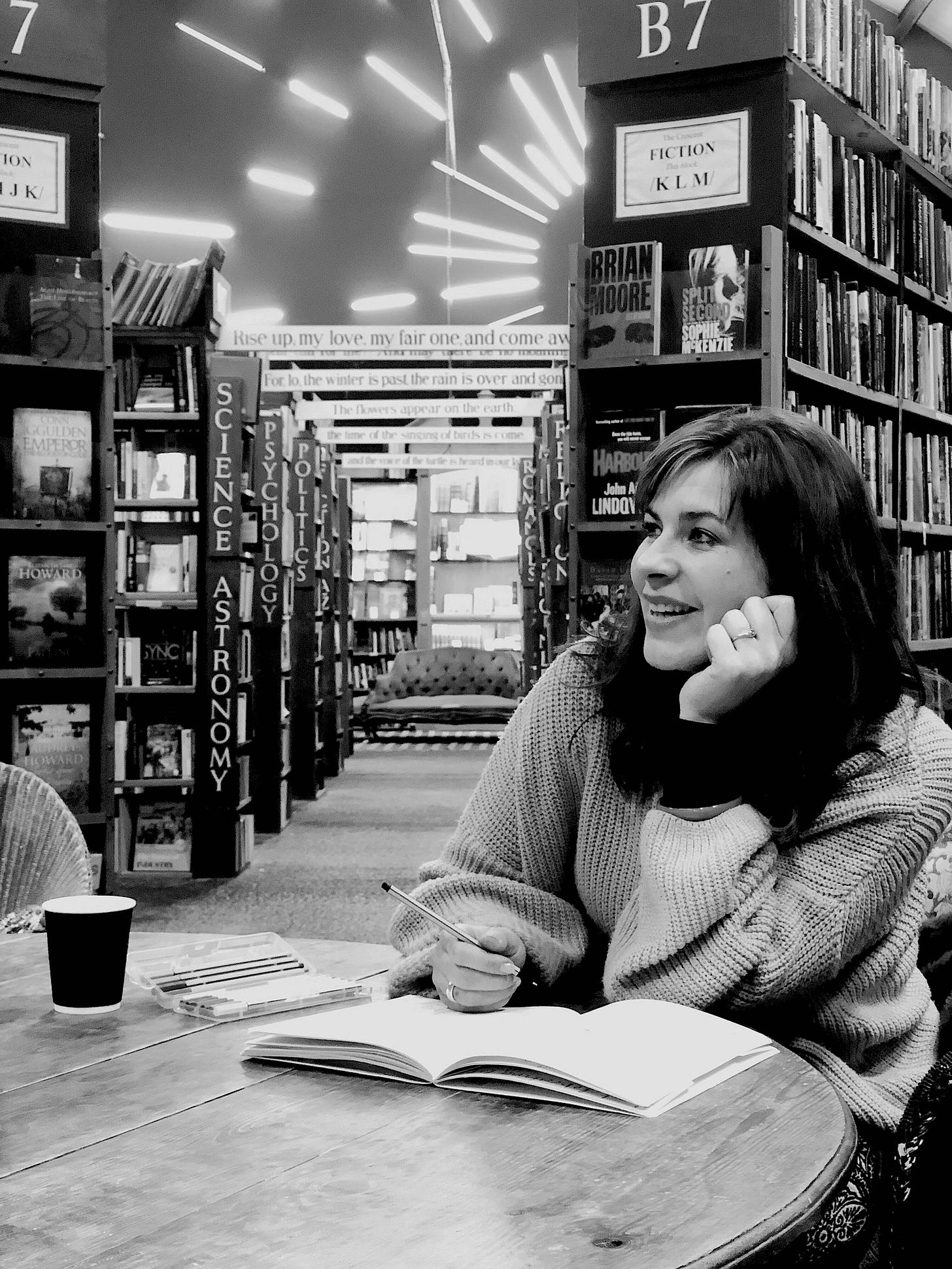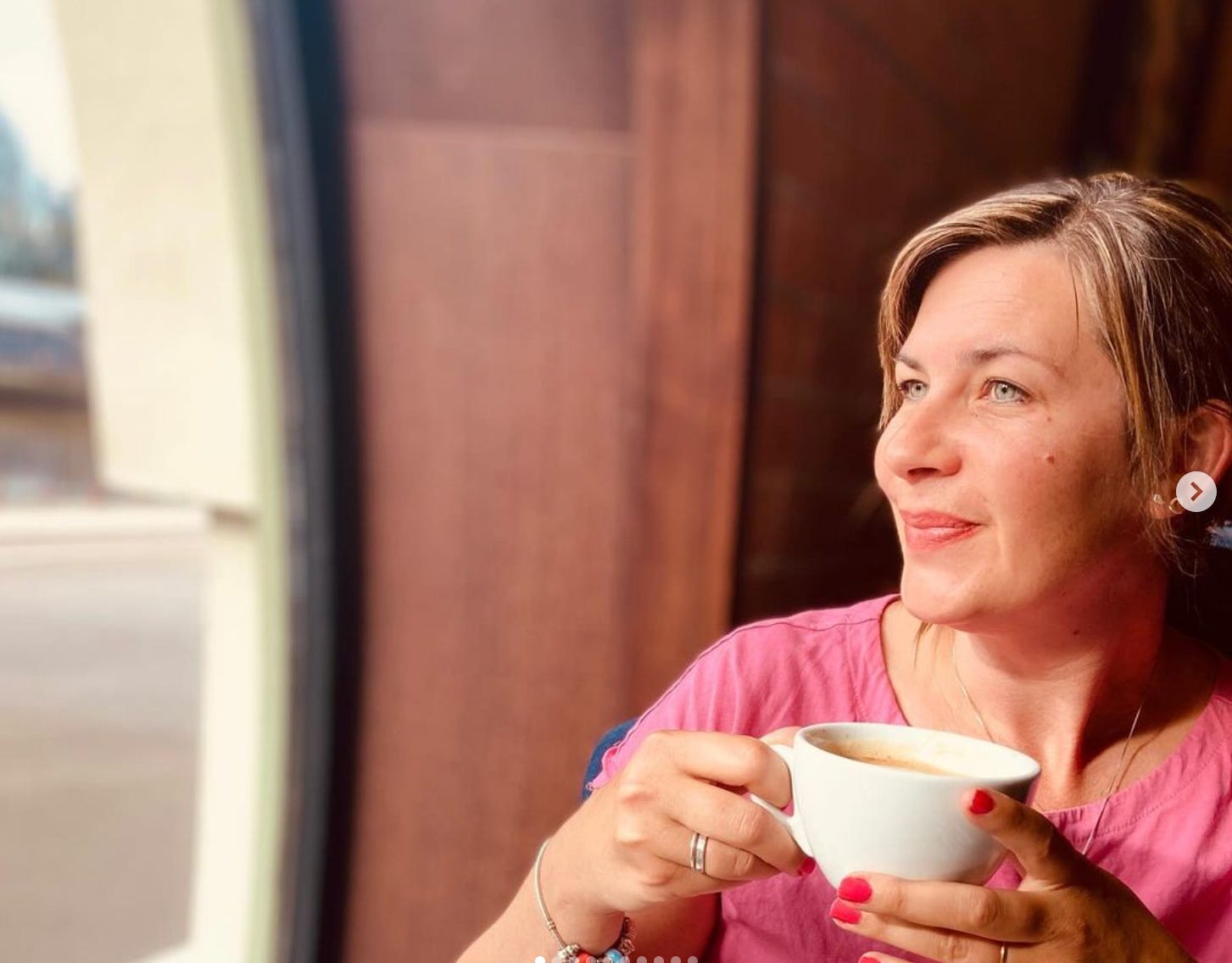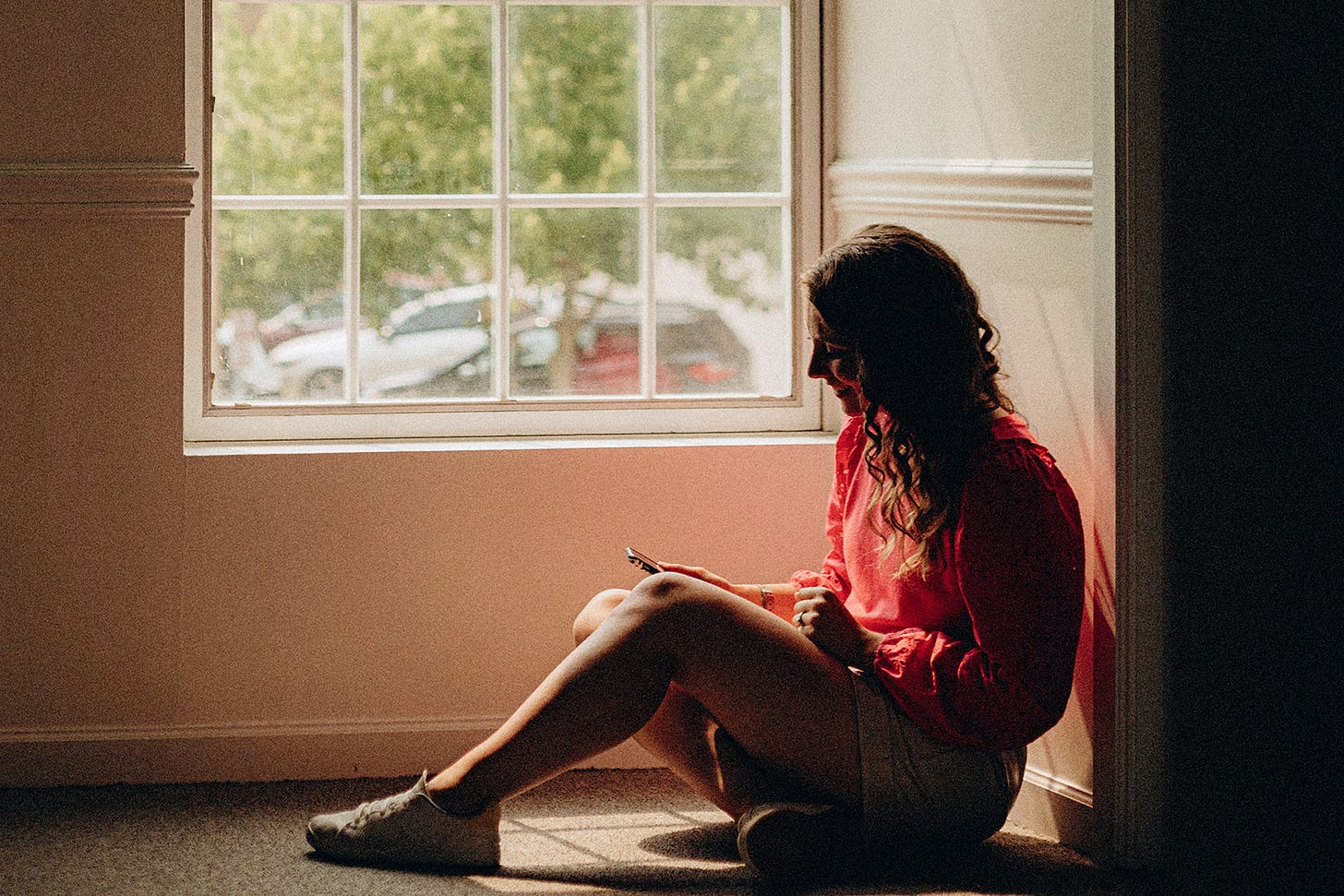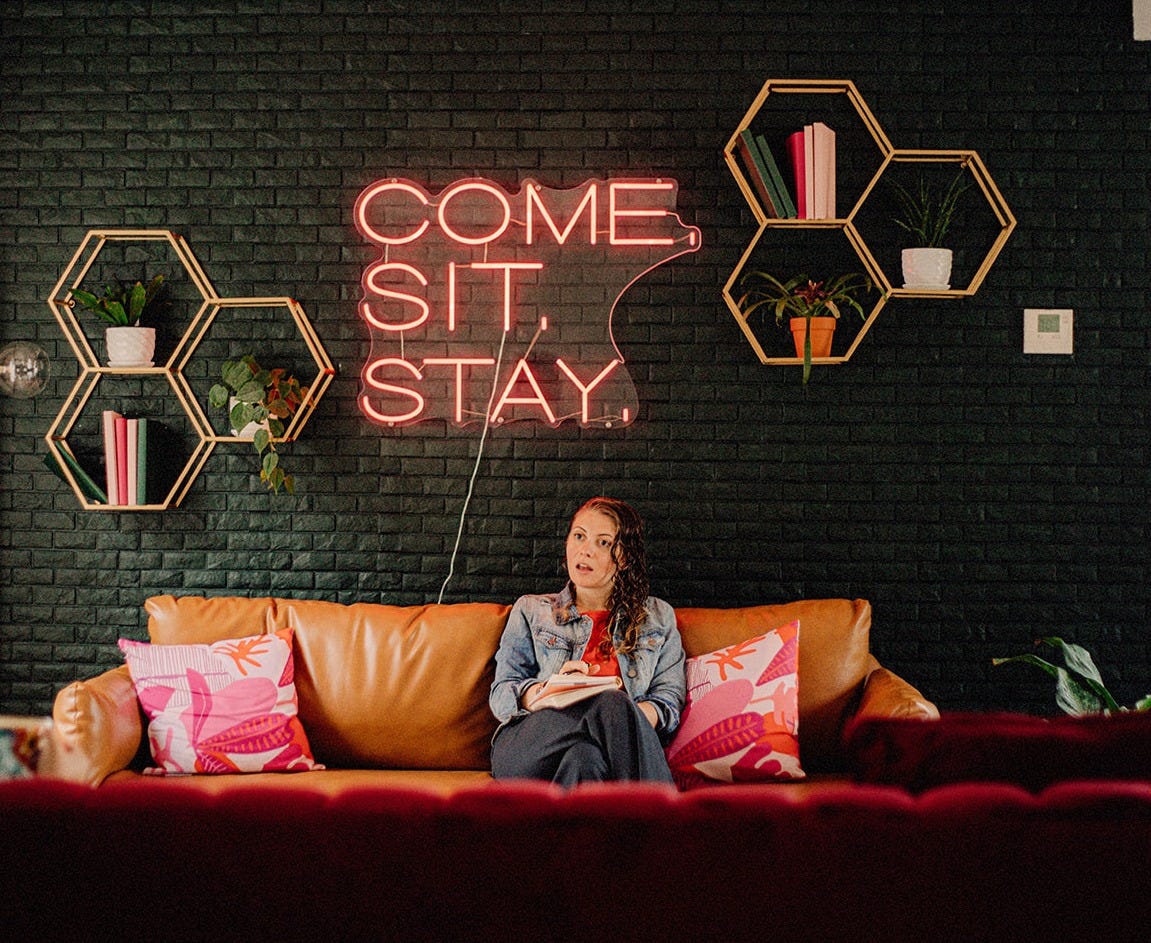I'm so excited to have this conversation with - I’ve been following her on Substack for a while. Watching her growth with not one but two publications, teaching others how to use the platform, raising her kids and growing her paid community into a bestselling membership.
That’s why we hopped on the mics to talk through:
Going Paid
Why Creating on Substack is Different than Social Media
Embracing a Creative Mindset
And all things (simplified) podcasting
Claire’s Journey to Substack
I found Substack through my husband, he said, “I think we're going to be writers on here for a little while.” And I was like, “Oh, that's interesting."
He's told me about platforms and I've gone, okay, okay. But with Substack I saw that I could really have a space just for my voice.
Away from social media.
Away from having to do a professional blog for my website
I had lost sight of what it was that I wanted to say.
So Substack became this place of self expression- somewhere between what goes into the journal (that isn't for public consumption) and this professional version of myself where I'd built a cage with all the other stuff.
Going Paid on Substack
I decided to turn on paid subscriptions from the beginning because I was open to money coming in, in lots of different ways.
I'd pivoted my business and decided to set up 9 different income streams, which I know sounds bold, but this was one. The idea was to turn the taps on and see what happens. There was no expectation.
As I started to make more connections and build more of a community here, I started these posts called “Stay Creative on Substack” on my publication: Creatively Conscious and it just went wild.
I realized, I couldn't really contain it so I decided to start a second publication for that teaching called: Sparkle on Substack.
I've got a creative background and at that time, Substack all felt quite dry. It felt like everything was just text and that's nice in a way.
But I was like, why aren't people bringing more imagery in? Where are the photographers? Where are the people that want to embed video? The platform's got so much capacity for all that stuff.
So I started that series in June 2023- and it's been bananas. I didn't know when I turned Sparkle on Substack on that that tap was just gonna keep flowing. And that more and more Sparklers were gonna flood out and then there was gonna be a big flood in my whole house.
But I went all in:
Setting it up as paid.
Deciding on what I wanted out of this space.
And getting really clear on what my members get each month.
I’ve found that successful paid Substacks have that in common: Clarity.
It's so difficult in a sea of subscriptions to decide what to charge for yours, especially if you’re not clear on your end goal and what your members get.
It's softer sales on Substack than what we're used to seeing off platform. If you’re very clear and direct then the subscriber knows exactly what they're being asked to do and converts without needing more of you.
And, even though, there's a lot of gross undercharging that goes on- I'm including myself in that, because if this membership was off platform it would be more expensive.
Instead we've got to understand how going paid on Substack works within our business and content ecosystem. A lot of people feel like “I need to make the ‘right decision’ about going paid and paywalling stuff. And to be honest, it's all just a massive experiment.”
I don't know whether you find that as well Megan?
Megan:
I feel like because I've come from the business world, I see Substack as this beautiful, gentle funnel opportunity.
I look at $10/month, and think: if I only showed up once and poured my heart into something- that in itself is a ton of value.
Pair that with the archive, and if I did nothing else, these articles are like a course.
So you could look at the paid “membership” not as an ongoing place to show up but instead as a yearly or a monthly payment plan on your archive.
Then when I added in the founding tier, which I've called the mini-course collection, I found an even deeper way to serve through my creation.
A space where I can do my cinematic YouTube podcast/vlogs as a free preview to a mini-course course. And thanks so Substack, it all lives in one space and sells for me.
If they want more, they’ll be prompted to grab that course. And in doing so they’ll get access to any others I made for one price.
A price you’d expect to pay for one course but for the yearly subscription.
So, for me, I see this as an opportunity where I get to show up and create without any pressure- because it's such a no brainer price. (Especially if my people come from the world I came from where masterminds cost $40k for six months.)
This becomes a breath of fresh air, like, “Finally, I get this deep, beautiful help that doesn't cost me a lot.”
Which is why I've made Substack my full time focus (over my 1:1 services) because I can create and always direct back to one place that has everything.
Why Creating on Substack is Different than Social Media
Claire: I do believe it's a different type of audience here on Substack. Even though it's getting more and more popular, there are different people coming over here.
If we're like: “Settle in, this is gonna be a long one.”
They're like: “Great, I'll put the kettle on, you know?”
Whereas it's been harder to get people's attention elsewhere- so we aren't quite used to that.
We're still understanding, “Oh no it's not social media. We don't have to grab their attention within a nanosecond in an Instagram reel.”
They want to be here and they want to invest in this storytelling exchange or membership.
So setting down those old patterns is crucial to creating this space- because we're all creating Substack together.
Megan: I totally agree- I’ve actually stepped away from social media since coming to Substack and it’s felt so good.
I don't want to create on a schedule. I create when I have that impulse and I put a lot of time and make this whole cinematic thing.
Now, if I’m not creating, I’m focusing on marketing what I have created, leveraging that archive, and letting people know it even exists through Pinterest, Youtube, connecting with others on Substack and SEO.
Claire: Substack's given me this beautiful gift of people trust me because they've connected to enough of my work to pay me.
But it still blows my mind that that can exist.
On Instagram, if someone asked me about booking a 1:1, I usually knew that person or they'd known somebody I know. But on Substack, people are just like, here's my money. Can I come watch your things?
Like what's happening? So meeting my customers where the first interaction is they pay for Sparkle, and then we have a little DM interaction has blown my mind.
Embracing a Creative Mindset
Megan: Yes! Substack allows you to confront both:
That abundance mindset of: “Wait, it can be this easy?”
And the worth part of it too, like: “Me just showing up and sharing is important?”
Reminding ourselves that our experiences and stories are powerful and those alone can help people.
I think the podcasting space has helped strengthen that muscle for me because edutainment is the main vehicle there- where you're educating while you're entertaining. And we’ve seen the value and enjoyment placed there.
But I’ve personally felt I didn’t quite fit into that space. That I didn’t want to entertain for the ads, downloads, social following or massive community building.
I feel like there’s a group of us who have always wanted “talking and sharing our thoughts and stories” to be our business (almost like modern day philosophers) but there's never been a vehicle like this to do it.
So the fact that, Substack confronts those mindset pieces, putting emphasis on your worth in your creation and allowing abundance to flow in as you meet this different subset of people who:
Want to settle in and dive deeper
Who see the value
And when they're prompted on: you can have more and here’s how you pay- they’re interested.
It’s so amazing because you can focus on the work you love and less time wasted on social that isn’t moving the needle forward.
Claire: Yeah, it's easier to build up the picture of who you are and it's easier for people to trust you on Substack.
I feel like on socials, we've been sold a lot of things that maybe weren't accurate or true, or if they were accurate or true, maybe there was some missing nuance which doesn't happen so well on social media.
So because we've got this long form space we're able to:
Be transparent and in integrity with what we want to do
and what we find hard can shine through too.
Which really helps people connect to the work and helps us find the people we want to be in our spaces.
I love that part of being human together and in this creative space and on the ride together.
And it's why I've really enjoyed podcasting as well, because I knew that it was an act of service and community and I feel like so much creativity and so many different things have spurred from it. Has that been your experience too?
Podcasting on Substack
Megan: For sure! What we’re doing here wouldn’t be possible without podcasting.
I started my first podcast July of ‘21. I had never done a ton of solo episodes because it felt like too much work in the old traditional podcasting ways. I had always done guests… which became its own kind of hamster wheel.
So Substack became this really cool space where podcasting not only allowed me to better understand what I wanted to show up and say and my philosophies, but then it ended up making me a better writer and speaker because of how I solo create here.
Check out my minimalist podcasting process here.
Now I take the transcription:
and create it into this readable blog post.
So you can read what I have to say, watch it or listen- I don’t care how you consume.
But creating from talking and sharing is so much easier for me than starting from a blank page and writing.
Claire: I love that you can be listening to others and then be in your own creative space and grab a pen real quick or you want to write a Substack from their words. It's just such a beautiful medium and that's why I want more people to podcast, like you do too.
I still feel like there's a lack of self-belief in the members that come to me around audio specifically. And so in reflecting on my journey, I used to be really terrified of public speaking.
But once I understood where that was coming from and whose judgment I was afraid of, it was like “Oh, well, I can just talk now. There's no fear there for me anymore.”
So I want to guide people through that and help them understand what it is that they want to say. I'm really curious about how we can remove the blocks and just speak.
So the Perfectly Imperfect Podcasting course is about:
Speech and our voice.
And then after we feel safe to create, the course will help you create your own creative process with podcasting.
Because I don't teach blueprints.
I'll say, this is what I did.
And then I'll take people through journaling prompts to better understand themselves.
So my hope is that they'll find a formula where they feel really safe.
I think there's something really powerful about, sitting in circle and witnessing each other and being like, okay, like if you're safe here, then what's the next safe step?
Megan: I'm really excited for you because it's just such a cool space to be in.
I own a podcasting and content creation studio here in the US and the clients who come here typically have a message they want to share but don't want to deal with tech. They're so overwhelmed by it. They just want to talk and share and focus on that- they're really legacy minded.
So my big thing is that the tech is great but what’s more important is:
getting behind the “mic” when your energy is there and you have the impulse to speak.
And second to that, is that the audio and video aren’t distracting from that message.
Because you know how it is when you're listening to something and the audio is so garbly that you can't understand it at all.
I think the podcasting space has gotten really overcomplicated with so much tech, and so many steps when the heart of it is that talking and sharing.
It's having something to say, sharing it and in doing so, building a community that cares around it.
And so I love that you're helping people with it.
And that's why I think Substack is the coolest way to do it because not only is it so innate to the platform, but both podcasting and Substack content are also built to last longer.
Your voice, thoughts, philosophies and message can live on for longer in those spaces because of their archives + SEO capabilities.
So finding ways to not box yourself into your creation, figuring out what works for you and getting that legacy information out there, is huge.
Let’s Grow Girl 🌿
If you enjoy my work and want to go deeper you can…
Join my paid community here where we dive into the intersection of slow living as a mom creative + connect in community.
Explore my mini-courses here.
View my Creative Studio Rental here.
See how we’re helping clients launch their podcast on Substack in one day here.































Share this post